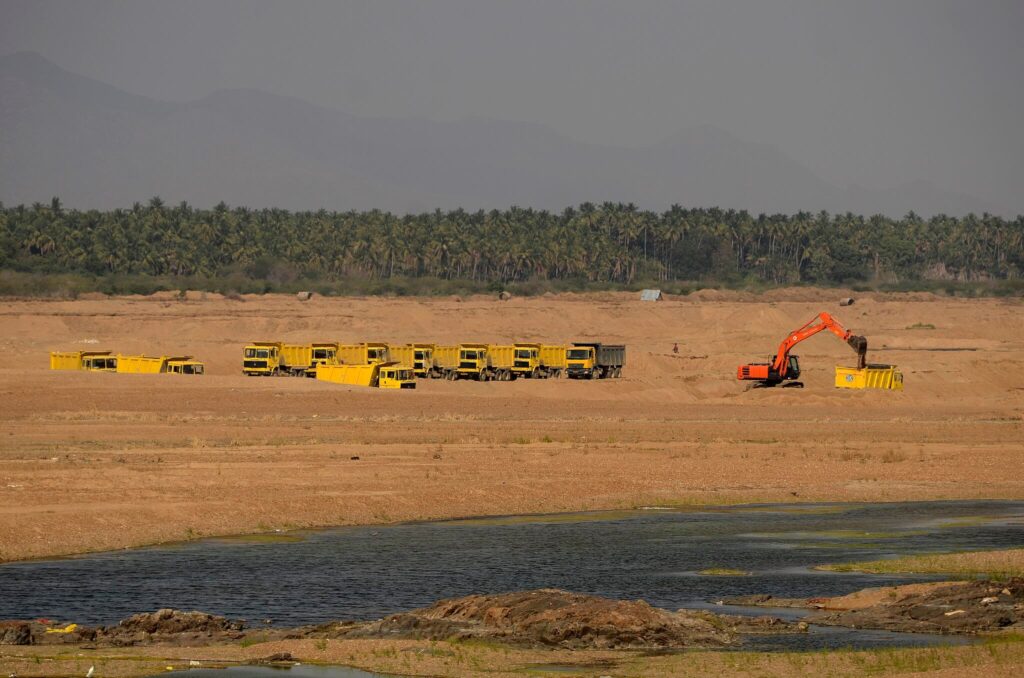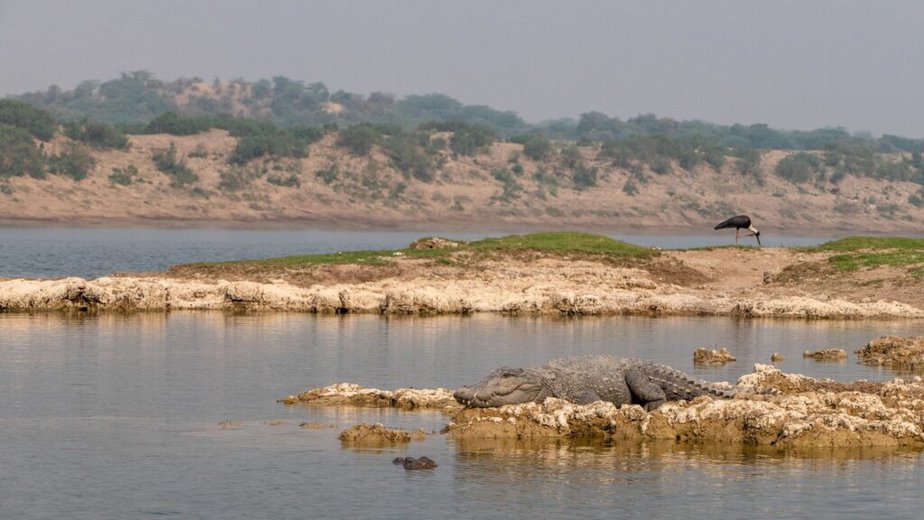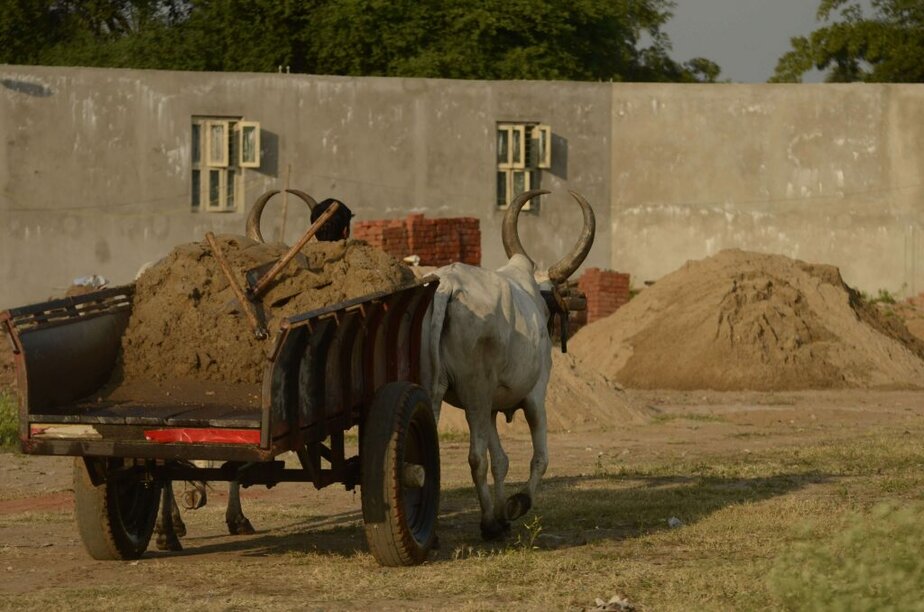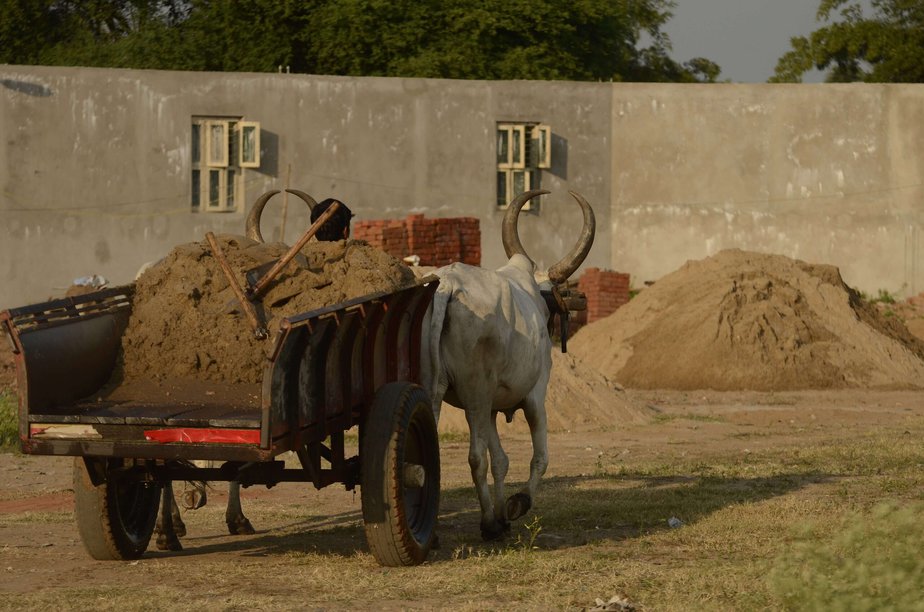In 2020, wildlife scientists monitoring the critically endangered gharial crocodile in Madhya Pradesh noticed something strange. A radio-collared female gharial had ditched the usual sandbanks of the Chambal river to lay her eggs. Instead, she travelled 15 kilometres to Kuno, a tributary of Chambal. She never returned.
Scientists and forest officials attribute one of the reasons for this change in egg-laying sites to the rampant sand mining along the Chambal river, where the heavy machine excavation of sand has left the crocodiles in search of safer habitats. Despite a 2013 National Green Tribunal (NGT) order that banned sand mining along Chambal and other rivers in the country without an environmental clearance from state or Central authorities, cases of illegal mining in Chambal have continued. A 2019 newspaper report claimed that Madhya Pradesh ranked third in recorded instances of illegal sand mining in India, and in 2018-19 alone, over 16,000 such cases had been recorded in the state. It is significant that mining here is not only led by mafias, but also driven by multiple small-scale local demands for housing and infrastructure, met by local communities.
This is a bridge across the #Chambal river near Morena (on the Madhya Pradesh side of the river), massive sand mining operations are happening right below the bridge! So many bridges across India have collapsed because of this activity pic.twitter.com/xakm3DRLdH
— Raj Bhagat P #Mapper4Life (@rajbhagatt) May 3, 2022
Then, in 2021, the state government acknowledged its inability to stop illegal mining. “At present, excessive amount, time and energy of the Forest Department is used to stop illegal mining activities and in court cases, which can be saved and used in other works of the department,” it mentioned in a proposal to the Ministry of Environment, Forests, and Climate Change (MoEFCC). Then, the state proposed an unusual solution—of denotifying 292.39 hectares in the Chambal Wildlife Sanctuary to make it available for legal sand mining. This, the state believed, would have double advantages—to “protect” the National Chambal Sanctuary, and provide “sand supply to the local residents for the livelihood of the local people.”
After being recommended by the State Board for Wildlife in 2021, this solution arrived on the agenda of the National Board for Wildlife’s meeting in June this year, where the final decision has been deferred to the next meeting.
The MP government’s proposal reasons that legalising sand mining in parts of the Chambal would prevent the wasteful expenditure being incurred to monitor illegal mining, while providing benefits to people and the environment. In their eyes, it would aid the livelihoods of local communities, ensure a revenue stream for the government, and channel a proportion of the revenue to conservation activities. But how can we assess this reasoning?
“Monitoring Illegal Sand Mining a Wasteful Expenditure”: So, Who Will Monitor the Legal Mines?
“This is a short-sighted move,” says Siddharth Agarwal, co-founder of Veditum India Foundation, a research and media organisation working at the intersection of environment, culture and society. “Usually, there are two types of violations that miners make—either they dig deeper than they are supposed to, or they mine in a broader area than they are permitted. Both these violations have grave consequences for the river ecology and fauna of the region. When mining becomes legal in Chambal, what will stop the legal miners from making these violations? How will the state government implement law and order to ensure such violations do not happen?”
If the state sees sand mining monitoring as wasteful expenditure, then it puts into question their incentive to ensure that the legal mining also takes place with ecological compliance. It does not instil much confidence that a 2018 Comptroller and Auditor General (CAG) report confirmed gaps in the sand mining monitoring mechanism of Madhya Pradesh. The report found a shortage of staff, including mining officers and mining inspectors; out of 112 positions for mining inspectors, for example,only 98 were filled. Only 11 of the 50 districts in the state had notified check posts, which monitor the transport vehicle to ensure they have the requisite permits for mining. Of the total of 63 notified check posts, just seven were functioning.
“During my tenure, I had proposed a similar option of keeping some areas in the Sanctuary open for sand mining,” mentions Srinivasan Murthy, a retired Divisional Forest Officer in Morena district’s Chambal division. “But, I had suggested demarcating the already ecologically disturbed areas through ecological calculations.” Even the current proposal suggests using only those ghats for mining, which have “very little adverse effect on aquatic life.”
“Of course, there is no doubt that the Forest Department would have to work hard even in the case of legal sand mining to ensure proper regulation of the process. Andhadhund sand mining nahi ho sakti [sand mining cannot be carried out indiscriminately],” Murthy adds.
In the past, where mining has occurred indiscriminately, environmental violations have been well documented. The same 2018 CAG report also contains evidence of non-compliance of ecological conditions due to mining. When they tested 638 mines in 18 districts of Madhya Pradesh, the CAG recorded gross environmental violations against the conditions permitted for sand mining—heavy machinery was being used to excavate sand, heavy vehicles were transporting sand from right next to the river bed, and the flow of the river was being diverted due to in-stream mining.

In violation of these conditions, the State Environment Impact Assessment Authority reserves the power to cancel the miner’s lease. However, the CAG report found that despite show-cause notices being issued to the contractors, only 3 of the 18 cases saw action being taken against miners.
“When it comes to protecting forests, the government has trained forest guards and officials. With mining, we don’t see the same. Usually, it is the forest department [which is] given the task to monitor and prevent illegal sand mining, but many are not trained for this. Unfortunately, it has led to officials being hurt and murdered,” adds Sumaira Abdulali, founder of Awaaz Foundation, and an activist working on the issue of sand mining. Murthy also agrees. “The Chambal region is not easy to manage, geographically—the ravines make it an easy hide-out for violent attacks to happen against police forces or government officials,” he says.
In cases of sand mining, I have personally received death threats, and 17 members of my staff across mining officers, forest department officials, and police forces have been beaten up. In my one year tenure, I was able to stop illegal miners for only about 4 months. Where such a nexus between mafia, local people, and politicians exists, a very different approach is needed to manage the situation.
—Srinivasan Murthy, a retired Divisional Forest Officer
The Madhya Pradesh government also sees denotifying the Chambal Sanctuary for legal sand mining as a revenue source for the state. Can legalising sand mining really add significantly to the state’s exchequers?
“Will Bring in Revenue”: The Existing Revenue Shortfall in Legal Sand Mining
“Most often, in cases like these, a reason for the government to make sand mining legal is to ensure a net positive revenue, instead of losing out on this possible income source due to illegal mining,” says Abdulali. The proposal by the state to the MoEFCC reflects a similar sentiment when it says that “the business of illegal sand mining has become a major business …this also results in loss of royalty to the government.”
But, evidence shows that even where permits for sand mining were given in Madhya Pradesh, revenues have not been realised to their potential. When the CAG audited the District Mineral Officer of Sidhi in 2017, they found that where a contractor was supposed to pay ₹1 crore for mining the sand, he paid only ₹4 lakh, causing a shortfall of almost ₹96 lakhs to the government. This does not seem to be an isolated case. Between 2016 and 2017, the audit found that 18 contractors flouted contract payments across five DMOs in Madhya Pradesh—where a total of ₹1.79 crores should have been realised, less than half of it at ₹40.53 lakh had been received. Making matters worse, the audit pointed out that the Department had not initiated any action to cancel the contract and re-auction the quarries.
In fact, even the interests on delayed payments were not accounted for by the state. 36 contractors had delayed payments between 2015 and 2016 for as little as 8 days to as many as 391. Here, while ₹2.50 crore should have been the interest accrued on delayed payments, only ₹14 lakhs were received. The audit report makes remarks on the lack of action taken— “the Department did not issue demand notices for the recovery of the differential interest of ₹2.35 crore,” it reads. “This rationale of revenue improvement of the state through sand mining is also evident through various state-level sand mining policies,” Abdulali comments. “They provide a framework for how best to maximise revenue from sand, instead of acknowledging that it is a resource to protect.”
Also Watch: Understanding Illegal Sand Mining In India | The Bastion
Apart from the shortage in the Forest Department’s capabilities, which can lead to grave ecological impacts, the current sand mining monitoring infrastructure also falls short in another aspect of the denotification proposal—demarcating some part of the revenue towards conservation.
“25% Royalty for Conservation Work”: The Ecological Farce
Insisting upon a commitment towards environment conservation, the MP government’s proposal suggests channelling 25% of the royalty earned from sand mining towards the Forest Department, who would then engage in various development work for “protection and promotion [of the environment]”.

But when similar provisions were made in the past, they were plagued with inter-policy contradictions, resulting in ecological development being compromised.
Take, for instance, the District Mineral Foundation (DMF). This is a fund initiated by all state governments where mining is prevalent, which requires every mining lease holder to pay up to one-thirds of their royalty to the fund. This money is then used for the benefit of mining-affected communities in the form of facilities across health, ecology, education, and other development work. Now, the 2016 Madhya Pradesh rules for DMF suggest that 60% of the funds should be spent on ‘priority areas’—like drinking water supply, environmental preservation, and education. Then entered the 2017 Sand Mining Policy of the state, which turned this around—the policy changed the priority areas to construction and maintenance of roads, and left the rest to conservation activities.
In fact, this lack of priority for environment and conservation activities in the funds allocated through DMF is visible across all mineral mining in the state, not just sand mining alone. When the Centre for Science and Environment analysed these funds in 2018, they found that 47% of them were for physical infrastructure like roads.
Apart from conservation benefits, the DMF could have provided development benefits for sand mining-impacted communities, but as Madhya Pradesh’s past shows, such benefits remain absent.
“Sand Mining can be Bonafide Livelihood”: Limited Benefits to People
Madhya Pradesh’s 2017 State Policy had prescribed that of the royalty received, ₹50 for every cubic metre will be paid to the DMF. Yet, as of 2018, the state had not implemented this provision, and “no funds [from ‘minor’ minerals like sand] were available for the welfare of mining-affected areas and persons,” the CAG audit report claimed.
Despite benefits through DMF not reaching the local residents, the denotification proposal portrays legalising sand mining as people-centric. It suggests that such sand mining would improve the livelihoods of the local residents by making sand available for their bonafide use; the Chief Wildlife Warden also added his comments on the proposal, by saying that the decision to identify certain parts has been a “long-standing demand” of about 173 villages along the boundary of the Sanctuary. “When we seal off an entire area from the local populations [through protected areas like the Chambal Sanctuary], we deny people the livelihood options. People’s requirements also have to be met,” Murthy adds.

But, Agarwal believes there is a need to relook at this rationale. “In other areas where sand mining is prevalent, I have heard from local communities that mining can benefit their livelihoods. But, it’s very important to be aware of the context,” he says. “When people are in destitution, you cannot expect them to choose between the environment and their livelihoods. It is the state’s responsibility to ensure that they are not in such dire situations; without that, they will agree to do anything to survive.”
The focus instead should be on monitoring sand mining practised by both large-scale contractors, as well as local communities more closely. One way of doing so could be to map the source of sand.
Currently, there is no way to know exactly where sand—an in-demand construction material—is coming from. There should be a policy push to mandate all suppliers of sand to declare which site they mined from, so that sand can be traced to its source, to deter the illegal supply.
—Sumaira Abdulali, an activist
Agarwal also emphasises the need for transparency. “While there is publicly available information about the number of sand mines, it is in a scattered form. Our team at Veditum is attempting to build a sand mining archive which will maintain incidents of sand mining. We envision making this available to reporters, activists, researchers, and government officials who would like to keep a track of illegalities and violence around this issue,” he adds.
Mining a resource such as sand, which is integral to riverine ecology and animal habitats, requires a strong monitoring mechanism, not a loosening of restrictions, which is what seems to be accompanying the denotification in the Chambal Wildlife Sanctuary. The current loopholes in policies, shortage of staff, weakened monitoring for ecological compliances, as well as ensuring efficient revenue generation only makes it seem like legalising sand mining in this region would do more harm than good.
Featured image of sand mined from a river and carried in a bullock cart representative, courtesy P Jeganathan






